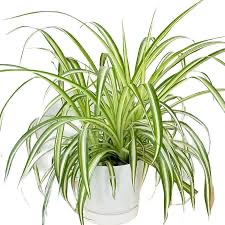The spider plant (Chlorophytum comosum) is one of the most beloved houseplants, known for its easy care, air-purifying qualities, and striking appearance. Native to South Africa, this plant has become a staple in homes and offices worldwide, thanks to its resilience and adaptability. Its cascading foliage and ability to produce baby plants (called spiderettes) make it a charming addition to any indoor space.
Features of the Spider Plant
1. Attractive Foliage
Spider plants are characterized by their long, arching leaves, which are often striped with green and white. Their flowing, grass-like appearance adds elegance to any room.
2. Spiderettes
The plant’s most distinctive feature is its spiderettes—small plantlets that dangle from the mother plant, resembling spiders on a web. These can be propagated into new plants.
3. Air-Purifying Qualities
According to NASA’s Clean Air Study, spider plants are effective at removing harmful toxins such as formaldehyde, carbon monoxide, and xylene, improving indoor air quality.
4. Adaptability
Spider plants thrive in a wide range of conditions, making them ideal for both beginners and seasoned plant lovers.
Types of Spider Plants
1.Variegated Spider Plant (Chlorophytum comosum ‘Variegatum’)
Features green leaves with white edges.
2.Reverse Variegated Spider Plant (Chlorophytum comosum ‘Vittatum’)
Has white leaves with green edges.
3.Solid Green Spider Plant (Chlorophytum comosum)
Boasts solid green leaves without any variegation, offering a more classic look.
How to Care for a Spider Plant
1. Light Requirements
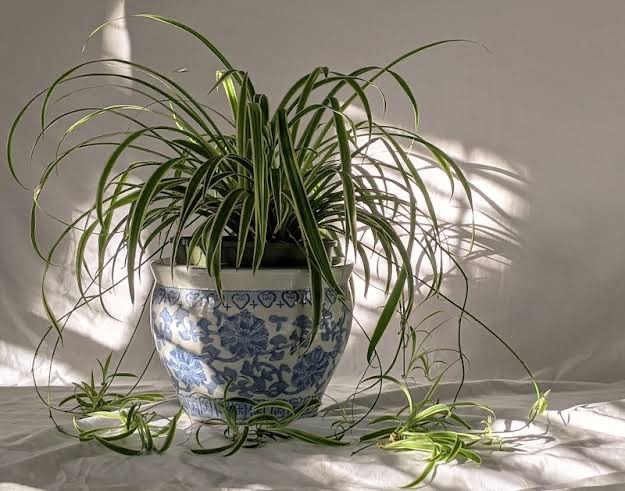
•Spider plants prefer bright, indirect light but can tolerate low-light conditions.
•Avoid prolonged exposure to direct sunlight, as it may scorch the leaves.
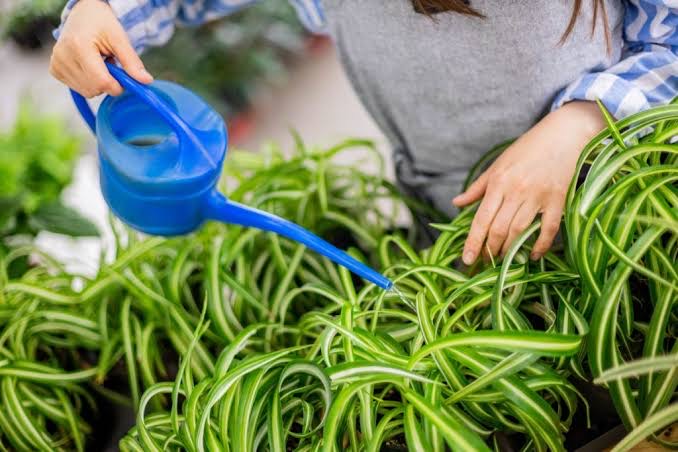
•Water when the top inch of soil feels dry. Overwatering can lead to root rot, so ensure the pot has proper drainage.
•They are forgiving if you forget to water occasionally.
3. Soil
Use a well-draining, general-purpose potting mix to keep the plant healthy.
4. Temperature and Humidity
•Spider plants thrive in temperatures between 65–75°F (18–24°C).
•They adapt well to average indoor humidity levels but appreciate occasional misting.
5. Years Fertilization
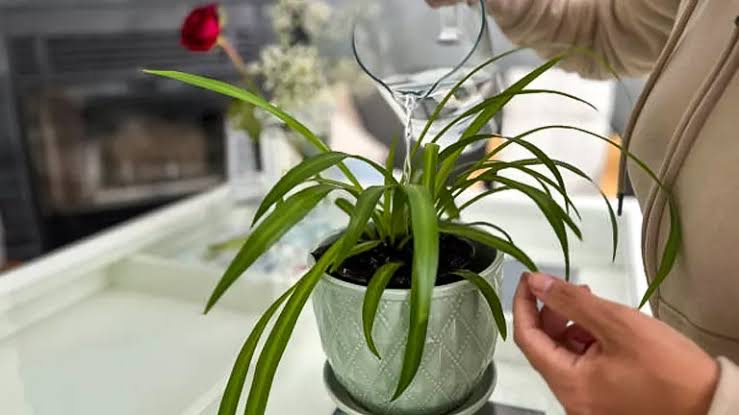
Feed with a balanced, water-soluble fertilizer once a month during the growing season (spring and summer).
6. Pruning
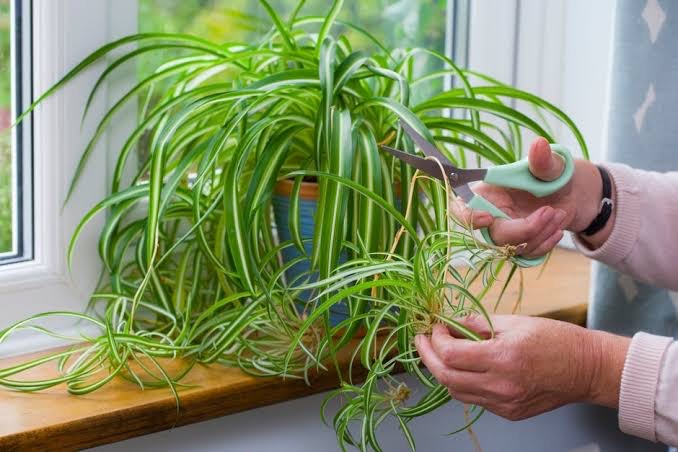
Trim off yellowing or browning leaves to maintain the plant’s appearance. Remove spiderettes if they crowd the plant.
Benefits of Spider Plant
1. Improves Air Quality
Spider plants absorb toxins from the air, making them a great choice for bedrooms, offices, and living rooms.
2. Pet-Friendly
Unlike many houseplants, spider plants are non-toxic to pets, making them safe for homes with cats and dogs.
3. Low Maintenance
Their adaptability and forgiving nature make spider plants perfect for those new to plant care.
4. Propagates Easily
Spider plants are one of the easiest houseplants to propagate, thanks to their spiderettes.
Common Problems and Solutions
1. Brown Leaf Tips
•Cause: Overwatering, underwatering, or fluoride in tap water.
•Solution: Use distilled or filtered water, and adjust your watering schedule.
2. Yellow Leaves
•Cause: Overwatering or lack of light.
•Solution: Allow the soil to dry out between waterings and move the plant to a brighter spot.
3. Pests
•Cause: Spider mites or aphids.
•Solution: Wipe leaves with a damp cloth and treat infestations with insecticidal soap or neem oil.
How to Propagate Spider Plant
1. Identify a healthy spiderette with visible roots.
2. Cut the spiderette from the mother plant.
3. Place it in water or directly into soil.
4. If using water, wait for the roots to grow before transplanting it into soil.
Decorating with Spider Plant
Spider plants are versatile and can be used in a variety of ways:
– Hang them in baskets to showcase their cascading leaves.
– Place them on shelves to let their spiderettes trail down.
– Use them as a centerpiece in brightly lit rooms.
Conclusion
Spider plants are more than just houseplants—they’re natural air purifiers and charming companions that bring life to any space. With minimal care and the ability to propagate easily, they’re perfect for both plant beginners and seasoned enthusiasts. Whether you place them in a hanging basket or let them thrive on a windowsill, spider plants will reward you with their vibrant, graceful presence.
